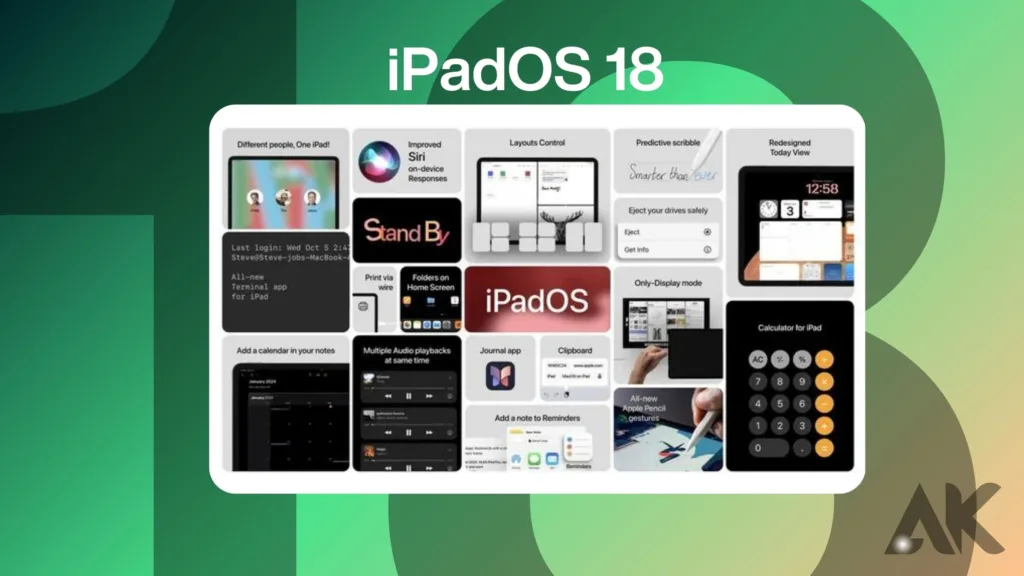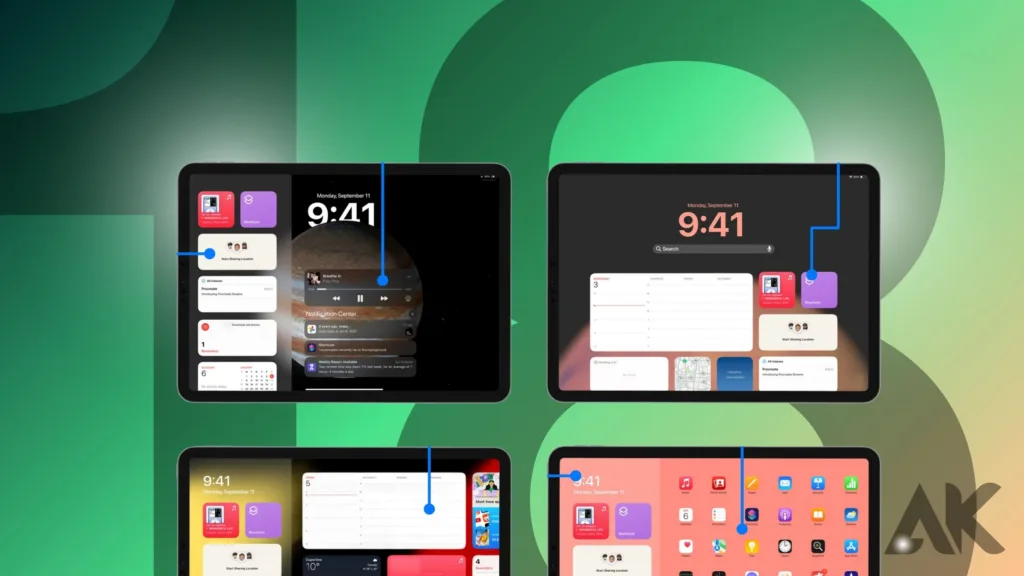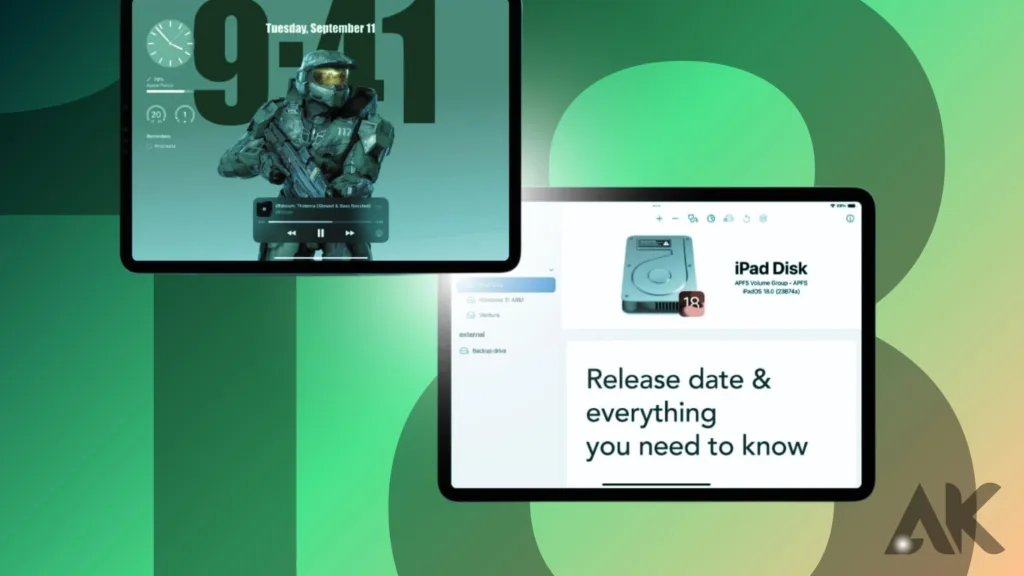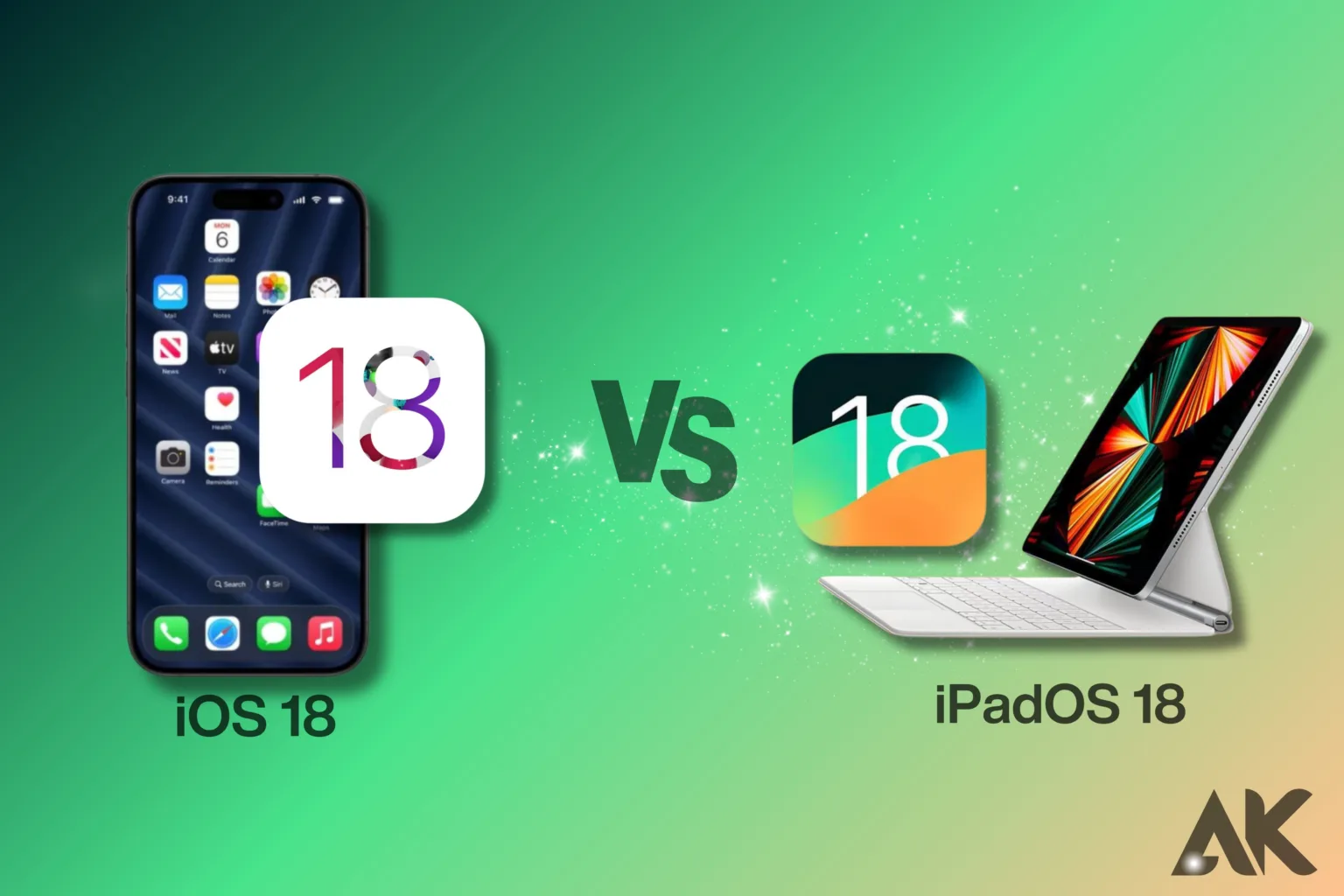iPadOS 18 vs iOS 18 represent the latest advancements in Apple’s operating systems tailored for iPad and iPhone users, respectively. These updates bring a host of new features and optimizations aimed at enhancing the user experience and productivity. iPadOS 18 builds upon the iOS foundation but is specifically designed to harness the capabilities of iPad devices, offering features like enhanced multitasking, refined Apple Pencil integration, and improved external monitor support.
On the other hand, iOS 18 focuses on delivering a seamless and automatic experience across various iPhone models, emphasizing mobility and compact usability. Both operating systems share a common core but have distinct functionalities that cater to the unique demands of each device. With iPadOS 18 and iOS 18, Apple continues to refine its ecosystem, providing users with innovative tools and enhancements to maximize the potential of their iPads and iPhones.
What is iPadOS 18?

iPadOS 18 is the latest iteration of Apple’s operating system designed specifically for iPads. It introduces a range of new features and improvements tailored to leverage the unique capabilities of iPad devices. This update enhances multitasking with new Split View and Slide Over options, improves Apple Pencil integration for creative tasks, and offers enhanced external monitor support for increased productivity. iPadOS 18 aims to provide a more desktop-like experience on iPads while retaining the intuitive touch interface that users love.
What is iOS 18?
iOS 18 is the latest version of Apple’s mobile operating system, designed for iPhones. It brings exciting new features and enhancements to make using your iPhone even more intuitive and enjoyable. With iOS 18, you can expect improvements in performance, new capabilities in apps like Messages and Photos, and enhanced privacy controls to keep your data secure. This update focuses on delivering a seamless and user-friendly experience across a wide range of iPhone models, ensuring that you get the most out of your device every day.
User Interface Variations

The user interface (UI) variations between iPadOS 18 vs iOS 18 are notable. iPadOS 18 introduces a more desktop-like experience optimized for larger screens, offering advanced multitasking features like Split View and Slide Over.
On the other hand, iOS 18 retains a compact and mobile-friendly interface tailored for iPhones, ensuring a seamless and intuitive user experience on smaller screens. These UI differences reflect the distinct design philosophies of each operating system, catering to the unique needs of iPad and iPhone users.
Multitasking Capabilities
The multitasking capabilities differ significantly between iPadOS 18 vs iOS 18. iPadOS 18 provides robust multitasking features designed for larger iPad screens, including Split View, Slide Over, and enhanced app management. These features allow users to work efficiently with multiple apps simultaneously.
In contrast, iOS 18 offers more streamlined multitasking optimized for the iPhone’s smaller screen size, focusing on quick app switching and efficient task management. The variations in multitasking capabilities cater to the specific needs and usage patterns of iPad and iPhone users, enhancing productivity on each device.
Device-Specific Functionalities

The functionalities specific to devices vary between iPadOS 18 vs iOS 18. iPadOS 18 introduces features tailored to iPads, such as enhanced Apple Pencil integration, support for external monitors, and optimized app experiences for larger screens.
These functionalities leverage the unique capabilities of iPads to enhance creativity and productivity. In contrast, iOS 18 focuses on functionalities optimized for iPhones, emphasizing mobile usage and compact design. This differentiation ensures that users get the best experience suited to their device’s form factor and usage patterns.
Pencil and Touch Interactions
The interactions involving the Apple Pencil and touch gestures differ between iPadOS 18 vs iOS 18. In iPadOS 18, there is a strong emphasis on leveraging the Apple Pencil for precise input and creative tasks, making it an essential tool for artists, designers, and note-takers. Additionally, iPadOS 18 optimizes touch interactions for larger screens, offering intuitive gestures and controls.
In contrast, iOS 18 focuses more on touch-based interactions suited for iPhones, providing a seamless and responsive touch experience tailored to smaller displays. These distinctions ensure that users can maximize the capabilities of their respective devices for various tasks and activities.
App Experiences
The app experiences differ between iPadOS 18 vs iOS 18. In iPadOS 18, certain apps like Safari and Mail are optimized for larger iPad screens, offering enhanced interfaces and functionalities tailored to the iPad environment. This includes features like split-screen browsing and expanded email management.
On the other hand, iOS 18 delivers a more compact app experience designed for iPhones, focusing on streamlined navigation and efficient use of screen space. Despite these differences, both operating systems ensure a consistent and intuitive app experience across a wide range of applications, catering to the preferences and usage patterns of iPad and iPhone users.
Similarities iPadOS 18 vs iOS 18
There are several key similarities between iPadOS 18 vs iOS 18, despite their differences. Both operating systems share a common foundation and core features, such as updated versions of core apps like Messages, Photos, and Safari. Additionally, they both incorporate new features like enhanced privacy controls and improved accessibility options.
Both iPadOS 18 and iOS 18 aim to provide a seamless and cohesive user experience across their respective devices, ensuring consistency and familiarity for users transitioning between the iPad and iPhone platforms. These similarities underscore Apple’s commitment to delivering a unified ecosystem while catering to the unique needs of different devices.
Performance and Optimization
Performance and optimization are key aspects addressed in both iPadOS 18 vs iOS 18. These updates focus on enhancing the speed, responsiveness, and overall efficiency of devices running these operating systems. Users can expect improved app launch times, smoother animations, and better battery management, leading to an overall enhanced user experience.
By optimizing resource usage and refining background processes, both iPadOS 18 and iOS 18 aim to deliver peak performance across a range of supported devices, ensuring that users can enjoy using their iPads and iPhones without slowdowns or interruptions.
Developer Features and Changes
Developer features and changes in iPadOS 18 vs iOS 18 encompass updates to software development kits (SDKs), tools, and APIs that enable developers to create innovative and optimized apps for iPad and iPhone users. Both operating systems introduce new capabilities for app development, such as improved ARKit functionalities, enhanced machine learning frameworks, and updated SwiftUI components.
These changes empower developers to leverage the latest technologies and deliver immersive experiences while ensuring compatibility across different device models and screen sizes. With robust developer support, iPadOS 18 and iOS 18 foster a vibrant ecosystem of apps that enrich the user experience on Apple devices.
User Experience and Accessibility
Enhancing user experience and accessibility is a core focus of both iPadOS 18 vs iOS 18. These updates introduce a range of features aimed at improving usability for all users, including those with disabilities. Accessibility enhancements include improvements to VoiceOver, Magnifier, and other assistive technologies to ensure a more inclusive experience.
Additionally, both operating systems offer customizable interface options, allowing users to personalize their devices according to their preferences. By prioritizing user experience and accessibility, iPadOS 18 and iOS 18 strive to provide a seamless and intuitive interface that caters to the diverse needs of all users.
Conclusion
In conclusion, iPadOS 18 and iOS 18 represent significant advancements in Apple’s ecosystem, tailored to meet the diverse needs of iPad and iPhone users. These updates introduce innovative features, enhance performance, and prioritize user experience and accessibility.
Whether you prefer the larger canvas of an iPad or the compact versatility of an iPhone, both operating systems offer a cohesive and intuitive platform that integrates seamlessly with other Apple services. Understanding the differences and similarities between iPadOS 18 and iOS 18 allows users to make informed decisions based on their device usage and preferences, ensuring a fulfilling and enjoyable Apple experience.
FAQs
Are iPadOS and iOS the same?
Apple Inc. created iPadOS, a mobile operating system, for their iPad tablet computer range. It was renamed to reflect the differences between the two product lines—such as multitasking—from iOS, the operating system that powers Apple’s iPhones..
What’s new in iPadOS 18?
Near-perfect voice controls and transcription in iPadOS 18 could turn the iPad into a far more effective work tool, for instance, and the tablet may become the most practical home movie-making device you’ve ever owned thanks to AI-powered editing features. For now, all we can do is wait and see what Apple has in store.
What is on iOS 18?
Updates for a number of the built-in apps, such as Notes, Mail, Photos, and Fitness, are anticipated for iOS 18. Although we’ve heard teases for a handful of the new features, we don’t know much about some of the scheduled upgrades.

